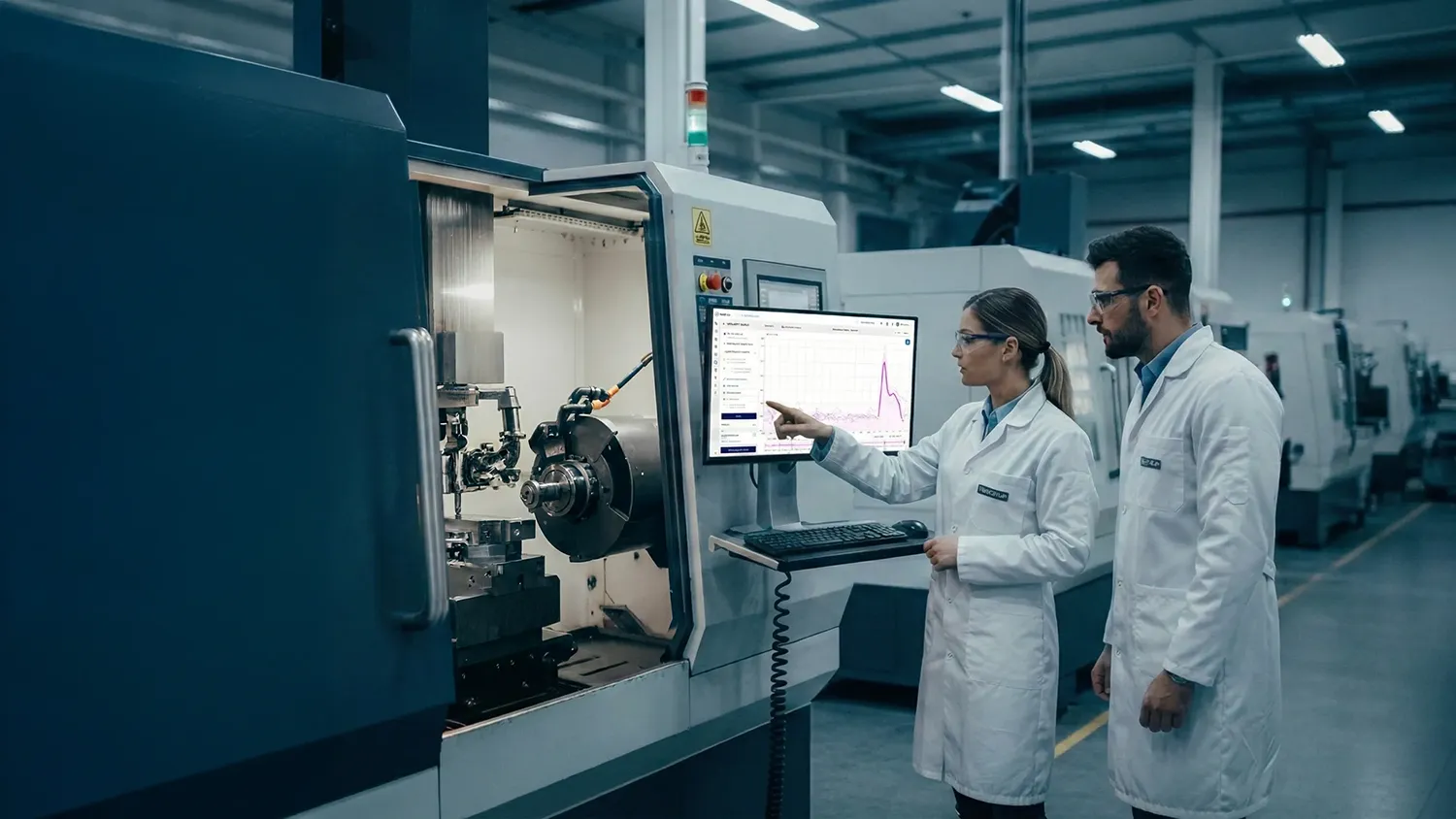Operations Performance Management: Q&A for Process Engineers

Table of Contents
This section provides answers to frequently asked questions about Operations Performance Management, tailored for process engineers and plant managers seeking to improve their industrial operations.
What are the main challenges in Operations Performance Management for process manufacturers?
Process manufacturing companies face several challenges in maintaining profitability amidst market volatility and operational risks. Key challenges include:
- Volatility: Adapting to energy transition, changing regulations, and competitive pressures. For instance, tracking and analyzing energy usage is vital for the transition to sustainable energy sources.
- Operational Risk: Addressing issues like unplanned downtime, knowledge retention, and maintaining brand reputation. Unplanned downtime significantly impacts efficiency and the bottom line.
- Profitability: Ensuring faster response to market demand, maximizing resource efficiency, and maintaining asset reliability. Optimizing resources directly impacts financial health.
How can data analytics help address operational challenges?
Data analytics can significantly enhance operational efficiency and decision-making. By leveraging industrial data, companies can:
- Improve decision-making: Operations personnel make numerous daily decisions that require accurate, data-driven insights, rather than relying on intuition.
- Gain a 360-degree view: Unlocking IT and OT data silos with a unified platform enables a comprehensive view of operational performance.
- Accelerate insights: Repurposing individual analytics approaches allows for faster capture of business value.
- Automate anomaly detection: Analytics can automatically detect anomalies and present them on dashboards, enabling quick responses to issues.
Why are traditional data analysis tools often inadequate for modern OPM?
Traditional tools like Excel, historian trend clients, and business intelligence (BI) tools are often insufficient for comprehensive OPM due to several limitations:
- Cumbersome and error-prone: Handling large volumes of data in spreadsheets is difficult and prone to errors, making these methods unscalable.
- Siloed visibility: Analytics capabilities built into individual business applications lead to a lack of full visibility across overall operational performance, with companies using an average of over 13 applications.
- Overwhelmed central teams: Central analytics teams can become overwhelmed by the sheer volume of projects needed to support daily operational decisions.
- Time-consuming analysis: The complexity of accessing data from disparate sources (5 to 8 potential data sources for an average engineer) leads to time-intensive, frustrating, and often ad-hoc data analysis.
What role does real-time data play in optimizing Operations Performance Management?
Real-time data is crucial for effective OPM, as the value of insights diminishes rapidly over time. To address this, solutions must consider both historical and near real-time data domains. Efficient, automated, and repeatable analyses are essential for maximizing productivity and value. While insights diminish quickly, storing relevant contextual data allows for historical analysis of future occurrences.
How can companies overcome the challenge of data silos for a holistic view of operations?
To achieve a 360-degree view of the manufacturing process and overcome data silos, companies need to integrate various data sources. This includes combining time-series data from historians, IoT platforms, and data lakes with event data from sources like LIMS, CMMS, ERP systems, and operator logbooks. Structuring all data sources through asset hierarchies, either imported or created within a platform, helps to eliminate the need for manual data combining and separate visualizations. TrendMiner, for example, offers vendor-agnostic and cross-platform connectivity, allowing access to all data in one portal even in diverse landscapes.
What are the benefits of empowering operational experts with self-service analytics?
Empowering operational experts with self-service analytics offers several benefits for OPM:
- Faster, data-driven decisions: It speeds up confidence in making data-driven decisions anytime, anywhere. This is critical as experts make numerous daily decisions that need to be accurate and fact-based.
- Enhanced productivity: Enables engineers to solve more operational issues and spend more time understanding production processes. TrendMiner's value tracker shows over 50% of use cases increase engineer efficiency.
- Global collaboration: Fosters global collaboration through a unified platform that provides access to globally available process knowledge.
- Reduced reliance on IT/data scientists: Frees up limited data science resources from routine analytics, allowing them to focus on complex problems.
- Knowledge retention: Captures, stores, and shares operational insights, addressing concerns about knowledge loss due to an aging workforce.
- Process optimization: Allows for easy detection of anomalies, identification of root causes, and optimization of processes, ensuring equipment runs within best operating zones.
How does anomaly detection contribute to improved Operations Performance?
Anomaly detection plays a vital role in improving OPM by:
- Early warnings: Identifying potential issues before they lead to significant disruptions like unplanned downtime. This helps mitigate critical risks and maintain consistent production.
- Faster response times: Enabling quick detection and response to issues through continuous monitoring and real-time analysis of operational data. This is crucial as the value of insights diminishes quickly.
- Root cause analysis: Assisting in finding root causes for unwanted process behavior, even if they are hours upstream in the process. This contributes to both process optimization and avoiding operational issues.
- Proactive problem-solving: Shifting from reactive "firefighting" of incidents to proactive issue resolution.
- Reduced safety risks: Preventing unsafe work situations that could result from decisions based on "gut feeling".
How can process engineers and plant managers operationalize insights at scale across multiple sites?
To operationalize insights at scale and drive continuous process improvements across an organization, process engineers and plant managers need capabilities that facilitate the widespread deployment of analyses and best practices. This involves:
- Standardizing approaches: Leveraging repeatable approaches for gaining operational insights across the entire organization allows for global comparison and application of best practices.
- Easy sharing and collaboration: Utilizing tools that enable seamless collaboration between local and central teams for sharing and analyzing operational data. This includes creating, saving, and sharing views, monitors, reports, and dashboards.
- Automated monitoring and alerts: Rolling out condition and pattern-based detection in the form of monitors across multiple production lines and sites. This helps scale the benefits of analytics projects to a broader group of consumers.
- Enhanced data layers for wider access: Implementing contextualization of process data at an enterprise level to provide an enhanced data layer to the entire company-wide user base. This results in meaningful dashboards and reports that allow value to be gained across all organizational levels.
- Knowledge capturing and enrichment: Logging all incidents and deviations as events helps capture knowledge about operational performance and serves as a starting point for future optimizations. Production monitoring further enriches the understanding of the process.
- Advanced analytics for solutions: Utilizing enhanced scripting capabilities for building, training, and deploying machine learning and AI models into operations.
For instance, TrendMiner allows individual work or projects to be easily operationalized, supporting the deployment of condition and pattern-based detection across various production lines and sites. This platform also facilitates knowledge capturing, sharing, and collaboration across departments and organizational levels, accelerating digitalization and empowering data-driven decisions.
What specific types of operational issues can be addressed through OPM solutions?
Operations Performance Management (OPM) solutions target a range of critical issues, often deployed as a near real-time, open-loop advisory system that leverages various analytic levels. These include:
- Process health monitoring: Continuously overseeing the health of industrial processes to ensure optimal performance.
- Energy management and optimization: Tracking and analyzing energy usage to facilitate the transition to sustainable energy sources and reduce a company's carbon footprint. This helps in meeting environmental goals and compliance requirements.
- Abnormal situation management (ASM): Identifying, analyzing, and responding to unusual process conditions or deviations before they escalate into incidents. This can involve:
- Reducing emergency plant shutdowns and safety exposure through "digital twin" anomaly detection models.
- Improving equipment operational condition monitoring via dashboard visualization.
- Implementing two-pronged approaches to boost overall operational excellence.
An example of value gained through OPM is Bayer, which achieved nearly a 10% increase in production capacity by systematically analyzing and solving problems with industrial analytics. Lanxess also increased plant safety, capacity utilization, and lowered overall costs, contributing to net-zero operations initiatives and meeting ESG compliance.
How does self-service industrial analytics empower engineers and operators in their daily work?
Self-service industrial analytics empowers engineers and operators by providing them with direct, intuitive access to data and analysis capabilities. This enables them to:
- Make faster, informed decisions: Operational experts make numerous decisions daily, which are significantly enhanced when supported by data rather than solely by intuition.
- Quickly identify root causes: Tools that offer pattern recognition and machine learning techniques help users easily find anomalies and deviations to pinpoint the root causes of unwanted process behavior. This includes receiving recommendations for root causes, even if they are hours upstream in the process.
- Optimize equipment performance: Engineers can ensure that all equipment operates within its best performance zones.
- Reduce time spent on analysis: By leveraging user-friendly platforms, engineers gain "time profit" and time for analyzing production performance options.
- Increase efficiency and productivity: This empowerment leads to greater efficiency in solving operational issues and allows more time for understanding production processes better. TrendMiner's value tracker indicates that over 50% of use cases lead to increased engineer efficiency.
- Collaborate effectively: Such platforms foster global collaboration through a unified system that provides access to shared process knowledge.
What is the significance of contextualizing process data in OPM?
Contextualizing process data is highly significant in OPM as it transforms raw time-series data into meaningful, structured event data, providing a holistic understanding of operations. This process:
- Enriches data for better insights: Combines time-series data with contextual process event data such as LIMS data, maintenance data, and shift logs.
- Provides a 360-degree view: By integrating IT and OT data silos, a unified platform can offer a complete view of operational performance.
- Automates knowledge capture: Allows for the capturing of knowledge about operational performance and serves as a starting point for future optimizations.
- Facilitates comprehensive reporting: Enables the creation of meaningful dashboards and reports, leading to value across all levels of an organization.
- Supports human intelligence: The enhanced data layer, enriched with context, acts as an extension to human intelligence for the entire company-wide user base.
For example, TrendMiner's platform indexes, structures, and contextualizes time-series, asset, and event data for rapid visualization, delivering a true unified view of all process-related data.
How does advanced industrial analytics, like TrendMiner, accelerate a company's digitalization journey?
Advanced industrial analytics platforms are critical drivers in accelerating a company's digitalization journey by:
- Democratizing data access and analytics: Enabling everyone on the manufacturing shop floor to access and analyze data at lightning speed, regardless of their background in statistical analysis or business intelligence.
- Increasing data-driven decisions: Shifting from gut-feeling based decisions to faster, fact-based ones across all operational levels.
- Unlocking business value: Helping companies monetize the value of their process manufacturing data at the lowest cost-of-ownership.
- Providing comprehensive solutions: Combining essential capabilities like enhanced data layers, self-service analytics, and operationalization at scale within a single platform.
- Fostering a culture of continuous improvement: Allowing repeatable approaches for operational insights to be leveraged, compared, and applied globally, while capturing and sharing all operational knowledge.
- Shortening time to value: Delivering tangible value quickly, often within hours rather than days or months, compared to similar tooling.
TrendMiner, an advanced industrial analytics platform, revolutionizes data-driven decision-making, offering unparalleled insights and control by integrating with various data sources and empowering users at every level.
This content was generated using AI. While TrendMiner strives for accuracy, we encourage readers to verify important information. We use AI-generated content to increase efficiencies and provide certain insights, but it may not reflect human expertise or opinions
This content was generated using AI. While TrendMiner strives for accuracy, we encourage readers to verify important information. We use AI-generated content to increase efficiencies and provide certain insights, but it may not reflect human expertise or opinions
Unlock Your Industrial Potential
Discover how our analytics solutions can transform your process industry operations today.

Subscribe to our newsletter
Stay up to date with our latest news and updates.
Latest Resources
Explore Our Newest Content to Maximize Your Operational Efficiency








